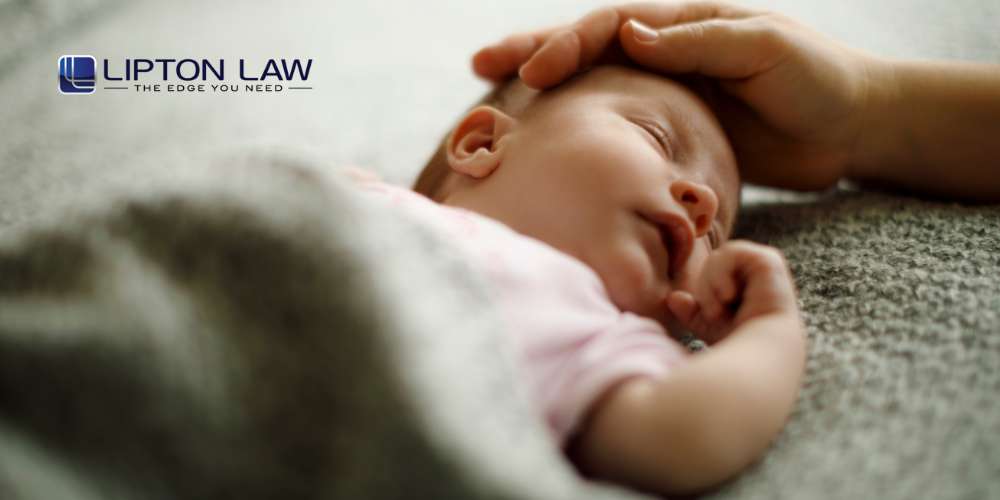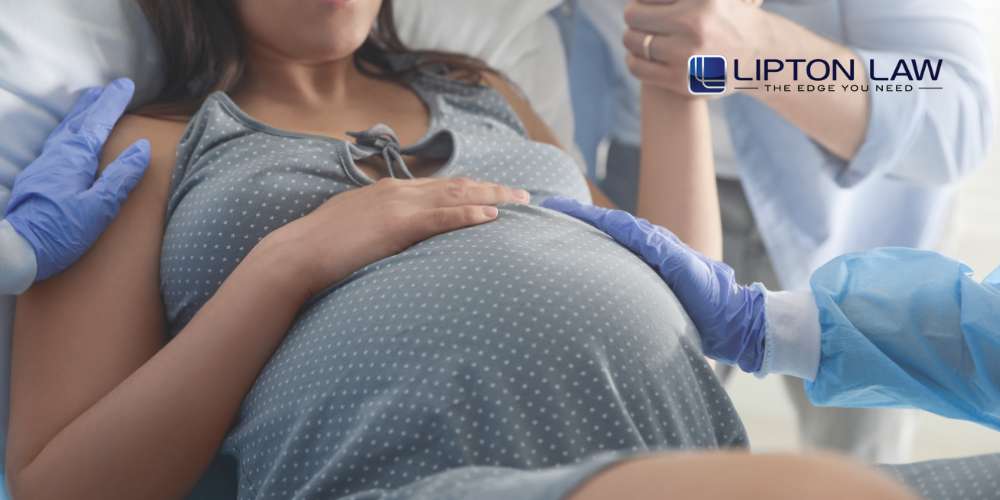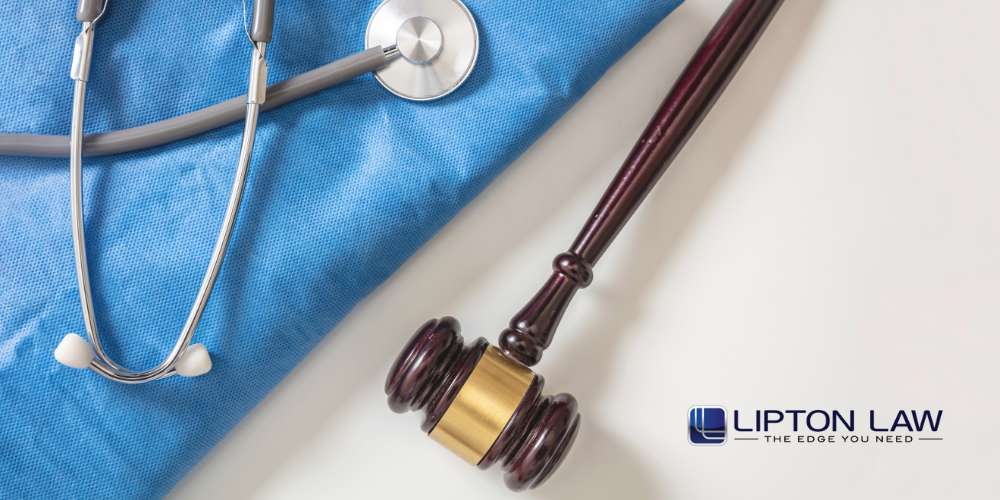Welcoming a new baby into your family is a joyous occasion, but for some parents, this happiness can quickly turn into heartbreak. Imagine preparing for the arrival of your little one, only to discover that your baby suffered a birth injury. This unexpected turn can leave families searching for answers and support during an incredibly challenging time. Knowing the differences between a birth injury vs. birth defect helps you understand the distinctions and explore your legal options to support your child’s needs.
In 2022 alone, the U.S. Centers for Disease Control and Prevention’s National Center for Health Statistics reported that 3,667,758 births were registered in the United States. While the vast majority of these births proceed without complications, many birth injuries can occur, leaving lasting effects on the child’s life and the family’s well-being.
Being aware of the differences between birth defects and birth injuries allows you to understand your legal rights and pursue the support your child deserves. At Lipton Law in Southfield, MI, we are here to help you through these difficult times with compassion and dedication. Call our office today at (248) 557-1688 to schedule a consultation.
What Is a Birth Injury?
A birth injury refers to physical harm that occurs to a baby during the birthing process. Unlike birth defects, many birth injuries happen due to complications during labor and delivery, often resulting from medical negligence or malpractice. These injuries can have long-lasting effects on a child’s life, impacting their physical and emotional well-being.
Common birth injuries include brain injuries, fractures, and nerve damage, each requiring specialized medical attention and, in some cases, legal action to seek compensation for the harm caused.
Common Birth Injuries
Common types of birth injuries encompass a range of conditions that can affect a newborn’s health. Understanding the various types of birth injuries is essential for parents seeking answers and support.
Brain Injuries
Brain injuries during birth can lead to severe consequences, including permanent brain damage and developmental disabilities. These injuries often result from lack of oxygen or birth trauma during delivery, highlighting the critical role of medical professionals in ensuring a safe birthing process. Conditions such as permanent brain damage and cerebral palsy can significantly impact a child’s life, necessitating ongoing medical care and support.
Cerebral Palsy
Cerebral palsy is a common birth injury that affects a child’s muscle control and coordination. It is often caused by brain damage that occurs before, during, or shortly after birth. Children with cerebral palsy may experience varying degrees of mobility challenges and require ongoing medical care and support. This condition underscores the importance of timely and effective medical intervention during the birthing process to prevent such outcomes.
Erb’s Palsy
Erb’s palsy (also known as brachial plexus birth palsy) is a type of brachial plexus injury that affects the nerves responsible for movement and sensation in the arm. This condition typically occurs when there is excessive pulling on the baby’s head and shoulders during delivery, leading to temporary or permanent weakness in the arm. Erb’s palsy can significantly affect a child’s ability to use their arm, requiring physical therapy and, in some cases, surgical intervention to restore function.
Facial Paralysis
Facial paralysis during birth can result in partial or complete loss of movement in the facial muscles. This condition can occur due to excessive force applied during delivery or pressure on the baby’s face, leading to facial nerve injuries and damage. This condition can affect a child’s ability to smile, eat, and communicate effectively, impacting their social interactions and emotional development. Early diagnosis and treatment are necessary to minimize the long-term effects of facial paralysis and support the child’s overall development.
Fractures
Fractures, or broken bones, are another common birth injury. These can occur during a difficult delivery, especially if the baby is large or the labor is prolonged. Fractures to the clavicle, arms, and legs, as well as skull fractures, are among the types of fractures that may require immediate medical attention and can lead to long-term orthopedic issues if not properly treated. Ensuring careful handling of the baby during labor and delivery is crucial to prevent such injuries.

Common Causes of Birth Injuries
Many different factors can cause birth injuries. These can lead to various health problems your baby may suffer from throughout their life. Identifying these causes is important for understanding potential negligence and pursuing a birth injury claim.
Large Babies
Babies born with a higher birth weight are at increased risk for birth injuries. The size of the baby can make the birthing process more challenging, leading to complications such as shoulder dystocia, where the baby’s shoulder gets stuck during delivery. Large babies may require assisted delivery methods, which, if not properly managed, can result in various injuries. These could include fractures, brachial plexus damage, or even spinal cord injuries.
Prolonged Labor
Prolonged labor can lead to fetal distress, increasing the likelihood of birth injuries. Extended periods of labor put additional strain on both the mother and the baby, particularly affecting the birth canal and the umbilical cord, heightening the risk of complications that may result in physical trauma to the newborn. Close monitoring during labor and prompt medical intervention can prevent such injuries.
Medical Malpractice
Medical malpractice is a significant cause of preventable birth injuries. When healthcare providers cause a failure to meet the standard of care during labor and delivery, it can result in severe injuries to the baby, including brain injury. Examples include improper use of delivery tools, delayed response to fetal distress, and failure to anticipate complications. Medical negligence can lead to a range of birth injuries, from minor injuries to severe, life-altering conditions.
Inadequate prenatal care can contribute to the occurrence of birth injuries. Regular prenatal check-ups help identify potential risk factors early, allowing for timely interventions. Lack of proper prenatal care can result in undetected conditions that may complicate labor and delivery, increasing the risk of birth injuries.
The use of delivery instruments such as forceps or vacuum extractors can sometimes lead to birth injuries if not used correctly. These tools should be employed with caution and only when necessary to ensure the safety of both the mother and the baby.

What Is a Birth Defect?
Unlike birth injuries, birth defects are structural or functional abnormalities that are present at birth. About 1 in 33 babies (approximately 3 percent) is born with a birth defect in the United States each year, according to the March of Dimes website. Some birth defects don’t need treatment or can be treated easily, but other birth defects require quick intervention because they cause serious problems or even death.
These defects can affect almost any part of the body, including the heart, brain, and limbs. Birth defects can be mild or severe, sometimes leading to significant health challenges that impact a child’s quality of life. Unlike birth injuries, birth defects are typically related to genetic or environmental factors rather than the birthing process itself.
Common Birth Defects
Unlike birth injuries, birth defects are structural or functional abnormalities that are present at birth, and typically related to genetic or environmental factors rather than the birthing process itself. These defects can affect almost any part of the body, including the heart, brain, and limbs. Birth defects can be mild or severe, sometimes leading to significant health challenges that impact a child’s quality of life.
Some of the most common birth defects include:
- Spina bifida
- Cleft palate
- Congenital heart abnormalities
- Limb deformities
- Neural tube defects
- Congenital diaphragmatic hernia
- Down syndrome
- Clubfoot
Each condition presents unique challenges and requires specialized medical care to support the child’s health and development.

Common Causes of Birth Defects
Birth defects encompass a wide range of conditions, each with unique characteristics and implications for the child’s health.
Maternal health during pregnancy significantly influences the risk of birth defects. Conditions such as diabetes, high blood pressure, and infections can increase the likelihood of congenital anomalies. Proper management of maternal health conditions is essential for reducing the risk of birth defects.
Folic acid deficiency during pregnancy is a well-known risk factor for neural tube defects like spina bifida. Ensuring adequate intake of folic acid supplements before and during pregnancy can significantly reduce the risk of these defects.
Lifestyle factors, such as smoking, alcohol consumption, and drug use during pregnancy, can increase the risk of birth defects. Promoting healthy behaviors and providing support for pregnant women can help mitigate these risks.
Genetics
Genetic factors play a significant role in the development of birth defects. Inherited conditions from parents can increase the likelihood of congenital anomalies, affecting the child’s overall health and development. Genetic counseling and testing can help identify potential risks and inform family planning decisions.
Environmental Factors
Exposure to certain environmental factors during pregnancy can contribute to birth defects. These factors include toxic substances, infections, and inadequate prenatal care, which can interfere with the proper development of the fetus. Ensuring a healthy and safe environment during pregnancy is crucial for minimizing the risk of birth defects.
Birth Injury vs Birth Defect: The Role of Negligence
While both birth injuries and birth defects can have profound impacts on a child’s life, the key difference lies in the role of negligence. Birth injuries occur during the birthing process, often resulting from medical malpractice or negligence by the medical professionals involved. In contrast, many birth defects occur due to genetic or environmental factors that may not involve direct medical negligence.
When a birth injury occurs due to the actions or inactions of healthcare providers, families may have legal grounds to pursue a birth injury lawsuit. Proving medical negligence involves demonstrating that the healthcare professionals failed to provide the standard of care, leading to the child’s injury. Common examples of negligence include:
- Delayed Response to Fetal Distress: Failing to act promptly when signs of fetal distress are detected.
- Improper Use of Delivery Instruments: Incorrect use of forceps or vacuum extractors can cause fractures or brachial plexus injuries.
- Failure to Anticipate Complications: Not recognizing risk factors such as large babies or prolonged labor.

Contact a Michigan Birth Injury Attorney at Lipton Law Today
If your child suffered a birth injury or was born with a birth defect, it is important to seek legal guidance to understand your rights and legal options. A Michigan birth injury lawyer from Lipton Law helps families address the challenges of birth injury cases while providing the edge you need to receive maximum compensation for your child’s injuries.
Our experienced birth injury lawyers can evaluate your case by assessing the details of your child’s birth injury or defect to determine if negligence was involved. We gather necessary evidence, including medical records and expert testimonies, to build a strong case.
We also handle filing a birth injury lawsuit and provide support and clear guidance throughout the legal process, helping you secure the compensation needed for your child’s ongoing medical care and support.
Don’t wait for support. Contact Lipton Law today at (248) 557-1688 to schedule a free consultation with our compassionate Michigan birth injury team.

